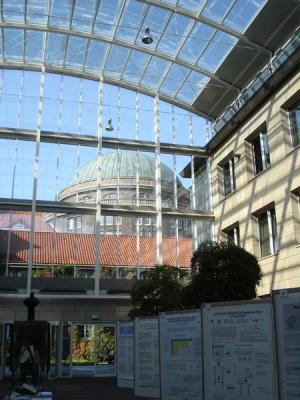GCB 2005, day two
The German Bioinformatics conference that I am currently attending has a regional focus, China. Guo-Ping Zhao from the Chinese National Genome Center, Shanghai started the day with an overview of the genomics involved in the outbreak of SARS in 2003. It was amazing to see how quickly comprehensive information such as the genomic sequence on the agent was obtained and how genotyping of the SARS-strains could be matched back to most individual cases of infections. The structural biology of several SARS proteins was investigated by Rolf Hilgenfeld, who was working on Coronaviruses before. Parts of the work that he presented - the solution of the crystal structure of the main protease of the virus - was actually performed in China in a university under quarantine.
Jin Li, director of the newly founded partner institute between the Chinese Academy of Sciences and the Max-Planck-Society presented an overview of recent developments in the HapMap-project, focussing on the insights into population genetics, Using haplotype blocks, they were able to reconstruct the major migration of the human population. It will be interesting to listen to people who criticized the project early on when The Big Paper appears, which Jin Li announced.
Obviously, the people presenting ideas on normalization of microarray data had a tougher time attracting attention. However, as long as data normalization plays such a pivotal role, we have to go a long way before microarray will deliver their potential, despite their abundant use today.

Another fine day here - both in the lecture theatre and outside.
Jin Li, director of the newly founded partner institute between the Chinese Academy of Sciences and the Max-Planck-Society presented an overview of recent developments in the HapMap-project, focussing on the insights into population genetics, Using haplotype blocks, they were able to reconstruct the major migration of the human population. It will be interesting to listen to people who criticized the project early on when The Big Paper appears, which Jin Li announced.
Obviously, the people presenting ideas on normalization of microarray data had a tougher time attracting attention. However, as long as data normalization plays such a pivotal role, we have to go a long way before microarray will deliver their potential, despite their abundant use today.

Another fine day here - both in the lecture theatre and outside.
spitshine - 2005-10-06 16:33
